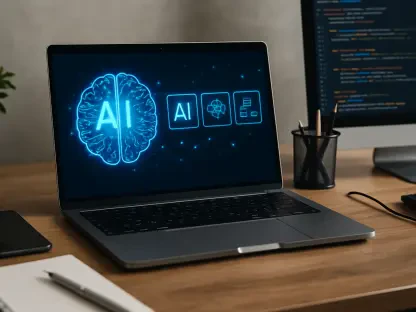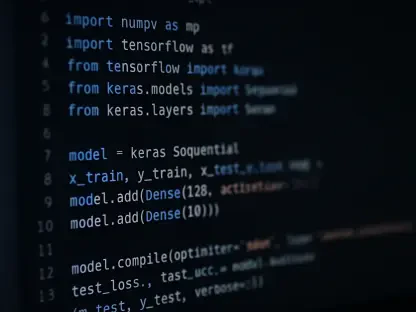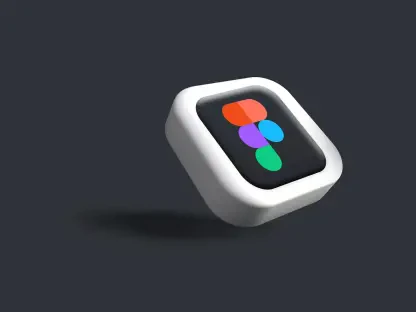OpenAI’s latest large language model, known as “o3,” has achieved a groundbreaking performance on the ARC-AGI test, a benchmark designed to measure the ability to adapt to novelty and acquire new skills. This unprecedented achievement not only represents a significant milestone in the field of artificial intelligence but also has profound implications for the future capabilities of AI systems. As AI technology continues to evolve, the performance of the o3 model on the ARC-AGI test suggests that AI systems may soon be able to perform on par with humans in various tasks.
Unprecedented Performance on ARC-AGI Benchmark
The o3 model’s performance on the ARC-AGI test is unprecedented, marking a substantial leap in AI’s ability to adapt to novel tasks. Historically, AI systems have struggled with tasks that require abstract pattern formulation rather than relying on preexisting knowledge. The ARC-AGI test, developed by François Chollet, is the only benchmark specifically designed to evaluate this adaptability in intelligent systems. In achieving a 76% accuracy score on the ARC-AGI, o3 has surpassed the average human score of just over 75%, making it a landmark event in AI development. Chollet himself has described this achievement as a “genuine breakthrough” and a “qualitative shift in AI capabilities,” suggesting that AI systems may soon become competitive with human work across various domains.
Significantly, the success of o3 illustrates the increasing sophistication of AI technology and its potential applications. This development signals a major change in how AI systems are perceived and utilized, highlighting the potential for AI to not just replicate human efforts but potentially exceed them in new and innovative ways. As AI continues to progress, the boundaries of what these systems can achieve will be tested and redefined, making the future landscape of human-AI interaction both exciting and unpredictable.
Implications for AI Capabilities and Future Developments
The performance of the o3 model indicates a potential paradigm shift in AI capabilities. Unlike its predecessors in the GPT-family from OpenAI, which primarily focused on incremental improvements for existing tasks, o3 has showcased an ability to generalize across new tasks it has not previously encountered. This novel capacity challenges current assumptions about the limitations and potential of AI systems, suggesting that they may be more versatile and powerful than previously thought. Despite these advancements, however, the achievement of artificial general intelligence (AGI) remains elusive. Chollet and other experts within the AI community maintain a cautious perspective, noting that o3’s occasional failures on simpler tasks underscore a fundamental difference from human intelligence.
This cautious stance serves as a reminder that while the progress made by o3 is remarkable, truly human-level AI is still a work in progress. The journey to AGI is rife with challenges and unknowns, requiring further breakthroughs in understanding and developing the architectures that underpin intelligent systems. Future developments in AI will need to focus on overcoming these challenges, refining the models, and expanding the scope of tasks AI systems can undertake. The potential for AI to revolutionize various industries and aspects of everyday life makes these advancements both critical and highly anticipated.
Technical Aspects and Speculations on o3’s Architecture
The article delves into the technical aspects of the o3 model, although much of the specifics remain undisclosed due to OpenAI’s decision to keep the model’s details closed-source. Chollet speculates that the model’s superior performance might be due to a novel architecture that leverages extensive test-time search capabilities similar to techniques employed by Google’s DeepMind’s AlphaZero program. This approach likely allows the model to “think” more effectively during the problem-solving process, suggesting a move away from brute force methods toward more complex, nuanced strategies.
The emphasis on test-time computational strategies represents a key research development that might inform future AI advancements. This potential shift from traditional methods towards more sophisticated approaches may change how models are designed, trained, and deployed across various tasks. As AI research progresses, gaining insights into these techniques will be essential for developing more capable and adaptable systems. The closed-source nature of the o3 model, however, means that much of this understanding remains speculative, leaving the AI community eagerly awaiting future disclosures or similar achievements from other entities.
Structure and Challenges of the ARC-AGI Test
The ARC-AGI test evaluates abstract reasoning by asking test takers to convert visual patterns shown in pixel grids based on certain rules. The simplicity of these tasks for humans, contrasted with their complexity for AI, illustrates the nuanced challenges AI faces in achieving cognitive flexibility akin to human intelligence. The test’s focus on abstract pattern formulation rather than robust storage of preexisting knowledge makes it a critical tool for evaluating the progress of AI systems like o3.
The significance of the ARC-AGI test cannot be understated, as it provides a unique benchmark for measuring AI’s adaptability to novelty. By emphasizing cognitive flexibility, the test highlights the areas where AI must improve to approximate human-like intelligence truly. The results obtained from such benchmarks inform both the AI community and developers about the current capabilities and limitations of AI systems, guiding future research and development endeavors. As new versions of the ARC-AGI test are anticipated, they will likely present even more complex challenges, pushing the boundaries of what AI can achieve.
Future Prospects and Ongoing Challenges
OpenAI’s newest large language model, “o3,” has set a new standard with its remarkable performance on the ARC-AGI test, a benchmark designed to measure an AI’s ability to adapt to new and unfamiliar situations. This achievement is a groundbreaking milestone in artificial intelligence, signaling impressive advancements in the field. The o3 model’s success on the ARC-AGI test not only showcases its superior capabilities but also hints at the future potential of AI systems to perform tasks at a level comparable to human proficiency. As AI technology progresses, the o3 model’s accomplishments suggest that we may be approaching an era where AI can execute a wide array of tasks with human-like adeptness. This development holds significant implications for the future, as AI’s role in various industries and daily life continues to expand. With models like o3 leading the way, the possibility of AI systems matching or even surpassing human performance in diverse activities seems increasingly attainable.









